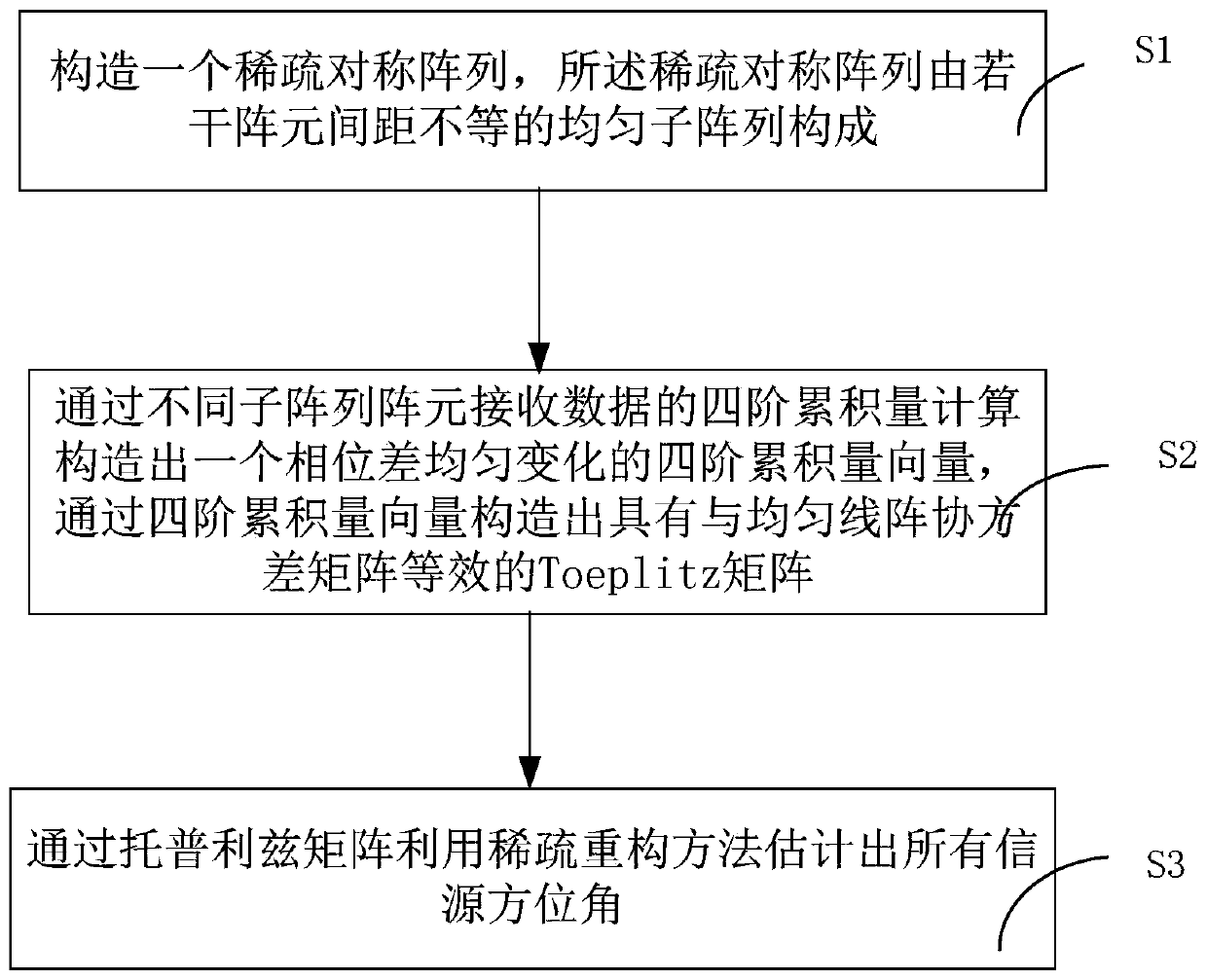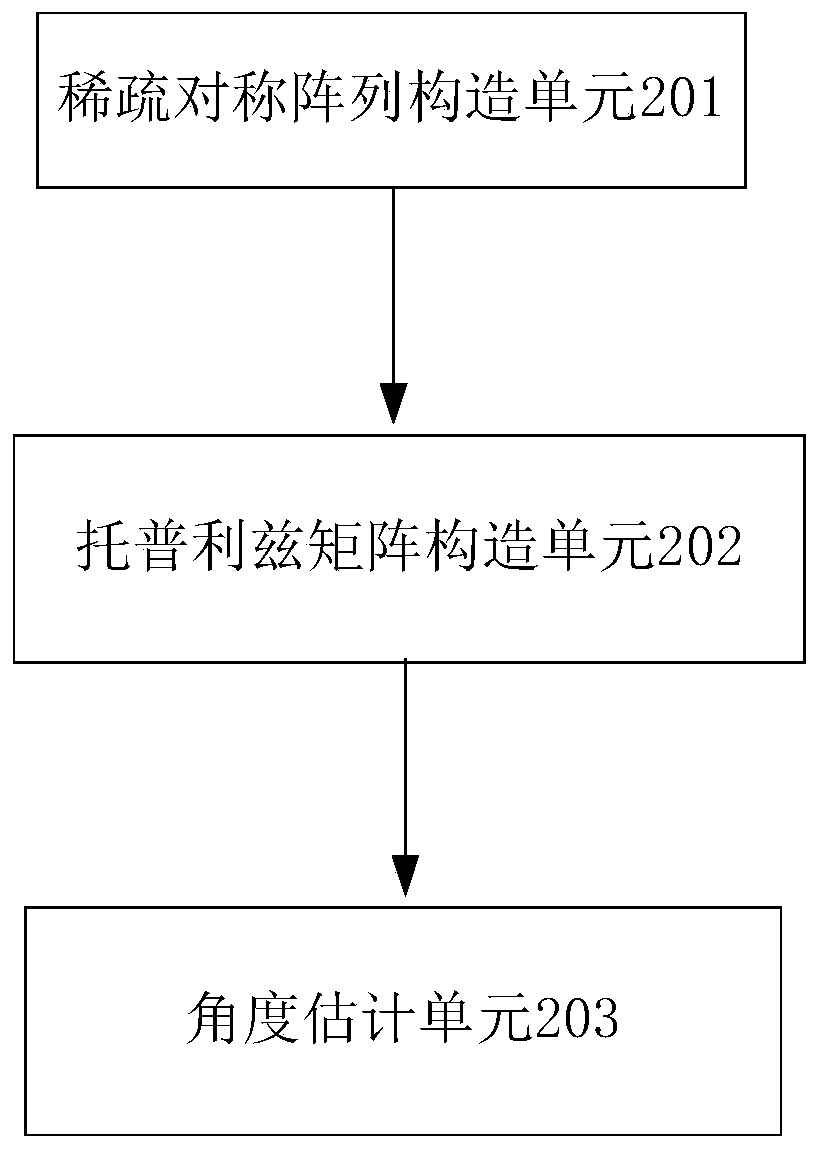Signal direction-of-arrival estimation method and device based on sparse symmetric array
A symmetrical array and direction estimation technology, which is applied to radio wave direction/deviation determination systems, measuring devices, and direction-determining orientators, etc., can solve the problems of array aperture loss and low accuracy of source angle estimation, and achieve good angle resolution rate and estimation accuracy, avoiding phase ambiguity issues, and improving utilization
- Summary
- Abstract
- Description
- Claims
- Application Information
AI Technical Summary
Problems solved by technology
Method used
Image
Examples
Embodiment
[0126] In this example, if Figure 4 As shown, the DOA estimation process of the present invention is as follows:
[0127] Step 1, perform fourth-order cumulant operations on the data received between different arrays, and construct five fourth-order cumulant vectors;
[0128] Step 2, merge the constructed five fourth-order cumulant vectors into a long vector with uniform phase change;
[0129] Step 3, constructing a Toeplitz (Toeplitz) matrix using the fourth-order cumulant vector of merging, which has a form equivalent to the uniform linear array covariance;
[0130] Step 4, performing eigenvalue decomposition on the Toeplitz matrix;
[0131] Step 5, calculate the signal subspace V of the received data according to the signal unitary space s and the noise subspace V n ;
[0132] Step 6, use the sparse reconstruction method to estimate all source azimuths.
[0133] Figure 5 It is a comparison chart of the root mean square error of the source angle of the present inven...
PUM
 Login to View More
Login to View More Abstract
Description
Claims
Application Information
 Login to View More
Login to View More - R&D
- Intellectual Property
- Life Sciences
- Materials
- Tech Scout
- Unparalleled Data Quality
- Higher Quality Content
- 60% Fewer Hallucinations
Browse by: Latest US Patents, China's latest patents, Technical Efficacy Thesaurus, Application Domain, Technology Topic, Popular Technical Reports.
© 2025 PatSnap. All rights reserved.Legal|Privacy policy|Modern Slavery Act Transparency Statement|Sitemap|About US| Contact US: help@patsnap.com



